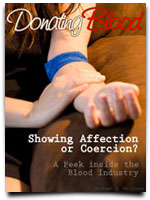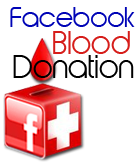Donating cord blood for public use is similar to giving blood. It’s free, it’s easy, it’s about making a difference and it’s also recommended by American Academy of Pediatrics (AAP). However, most public cord blood banks are facing scarcity due to lack of supply.
Lack of awareness is the number one reason why couples don’t donate cord blood. They are not properly informed that the umbilical cord contains stem cells and it can save a life of an ailing child. If these couples are given the right information they need to understand, they will not be hesitant to make a donation.
Second reason for scarcity is that donating cord blood is not also offered at every hospital in the country. Only 200 hospitals are affiliated with a public cord blood bank. This number is currently not enough to constantly supply the need for stem cells. Cancer and other malignant diseases occur randonly and it spares no socioeconomic class or geographic region. In fact, on an average count, 1 in every 4 elementary school has a child with cancer (Childhood Cancer Facts, 1999-2002).
Public cord blood banks receive inadequate funding is the third reason. The procedures for storing a single unit is expensive. It costs around $1500 and most of the public banks have no enough budget to consistently collect, test, freeze and store hundreds of units.
That’s why; the Congress passed the Stem Cell Therapeutic and Research Act of 2005 to give value to cord blood donation. The act was reauthorized in 2010 and it created the National Cord Blood Inventory. Its goal is to increase the number of donated cord blood units from people of different race and ethnic background.
Additional funding is also approved in an attempt to increase the availability of cord blood units in registry. With this increase in support, it’s expected that those thousands of children and adults can easily undergo a transplant right after they find a match.
* * *
It’s confirmed cord blood stem cells can cure malignant diseases such as cancers (Acute Leukemia, Chronic Leukemia, Hodgkin & Non-Hodgkin Lymphoma and Myelodysplastic Syndrome), blood disorders, immune disorders, metabolic disorders, brain injury. cerebral palsy, type-1 diabetes and hearing loss. To donate cord blood in public banks, use BloodBanker – The largest online directory of blood, plasma and cord banks!




